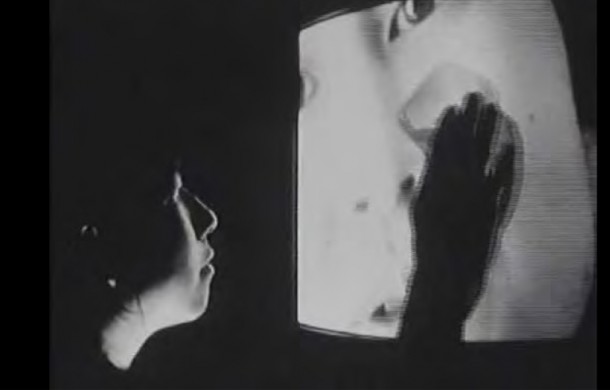LANA LIN
| 2013年05月10日 | 发表于 LEAP 19

At Gasworks in London, three video works made by Lana Lin between the 1990s and the early 2000s explore the artist’s Taiwanese heritage— and her Western influences— both materially and thematically, in work that explores the complex feeling that comes from existing between multiple cultural frameworks. The exhibition begins with Taiwan Video Club (1999), in which Lin interviews Taiwanese housewives about the underground trade of pirated Taiwanese and Japanese soap operas copied onto VHS tapes modified to accommodate up to six hours of footage each. One woman speaks excitedly and with an American lilt about the historical stories embedded in these soap operas. She recalls one series with a character she sees as the ideal woman: “Very weak, very gentle,” the lady explains. “Sensitive to weather, flowers, everything…we all wanted to be like her; so intelligent but so helpless.”
In one frame, Lin films a stack of videotapes, with titles including The Story of Taiwan and For Love or Country. For the women being interviewed, these tapes tell the history of their culture, so that “in different places everyone would know the same story.” The nostalgia here— in that popular culture is being used to narrate and preserve local or national culture— extends into the use of stories as a theme in the four-channel video installation Mysterial Power (1998–2002). Inspired by Lin’s adolescent cousin Yuan Zu, who is believed to have “received guidance from the prince of god and started to exhibit special ability,” the work presents images of temples in Taiwan and associated rituals to accompany the narrative.
In Mysterial Power, Lin’s cousin’s story is typed out on teletext and on a computer screen, with Lin also employing at times a computer-based translation system where conversations are typed in Chinese and translated. There are moments, however, when these conversations turn away from the story of the “prince of god” and become more about an interaction between the computer and the person controlling it. “Where are you from?” it asks. “Why did you come to earth?” Suddenly, the viewer does not know who is speaking: the computer, the artist, or something else altogether. It is a complex and layered work that explores the notion of being alien across contexts, from the figures of mythology that inform a culture and its history to a more globalized context in which the screen has become a cultural interface. The final work on show, Stranger Baby (1995), taps into what lies at the heart of all of this: the human being.
In a 16mm film that looks like a black-and-white 1960s home movie projected in full grain on the gallery wall, a baby is described as an alien, even though this baby is the narrator’s brother. Always lurking, yet never visible, never tangible, the narrator studies the baby in a world that is equally as alien as he. She is searching for extraterrestrials, too, this character, and talks about UFOs and alien visions. These musings are inter-spliced with a strange, theatrical image of a woman staring at the image of a man— or what looks like one.
In these visual fragments, issues of gender, species and origin, and the sense of existing in between definitions are all directed at a newborn child. This is the most destabilizing thing about Stranger Baby: even though the child becomes an abstract on which senseless projections are imposed, a sense of naïve confusion— even innocence— abounds. The narrator essentially gazes upon “one of her own” as something else, but is curious and sensitive to it, too— no doubt a healthier way to deal with man’s ubiquitous foe, the Other. The result is a nuanced work that at once stems from the particularities of Lana Lin’s own cultural background, and extends into the very impact “culture” can have (or not) on one’s sense of being.

